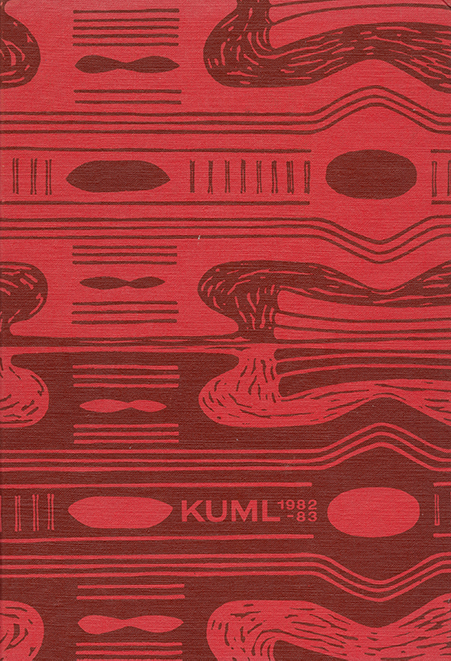The introduction of iron to Denmark
DOI:
https://doi.org/10.7146/kuml.v31i31.109139Keywords:
iron, introduction, denmarkAbstract
The lntroduction of Iron to Denmark
Traditionally, archaeologists have described the transition from the Bronze Age to the Iron Age using either the end of the former or the beginning of the latter as starting point (1). This has created a paradox: changes within the Late Bronze Age are explained in terms of the arrival of iron, whereas conditions in the early Iron Age are explained by its absence (2). Traditional research also accords iron social effects and significance, but without analysis of its actual occurrence in the archaeological context.
The aim of this article is therefore -based on an analysis of the archaeological occurrence of iron in both the Late Bronze Age and early Iron Age- to study the process of introduction of iron and its role in the processes leading from the Bronze to the Iron Age.
The Introduction of iron into Denmark
The oldest iron in Denmark is a fragment dated to Period III of the Bronze Age (5), while from Period IV two bronze razors of Nordic type are known with iron inlay (6). Period VI urn graves and hoards have yielded pins, small knives, tweezers of Hallstatt type and arm rings (7), but it is still a matter of few finds. From the Pre-Roman Iron Age, Period I, iron is a more common occurrence in the graves in the shape of bimetallic ornaments (12) and pins, but large objects do not occur. This applies within the entire lowland area of northern Europe.
From the middle of the Pre-Roman Iron Age, larger iron objects occur -weapons and a few tools (13-14). From Period III, tools occur in graves and a few settlements (15). The inventory now embraces single- and double-edge swords, spearheads, socketed axes, short scythes, foliage knives, awls, scissors and ordinary knives. The trend continues into the Roman Iron Age with blacksmiths' tools, files, planes, chisels, ordinary scythes, nails, fittings and keys.
In respect of quantity, iron follows a steadily increasing curve after its introduction: an increasing number of objects and an increasing variety.
An analysis of the introduction of iron into other areas (17) reveals that a similar course is followed, but earlier than in Denmark.
The introduction of iron as a general process.
If the process is examined from the qualitative point of view -in relation to degree of complexity- we obtain a different picture.
- Pleiner has laid down 4 phases of complexity for Greek material (21):
1) Sporadic use of iron, limited to the uppermost social levels.
2) Frequent use of iron, limited to the uppermost social levels.
3) General use of iron for tools and weapons. Iron is used in production and has spread to several social strata.
4) Iron enters into construction work, transport systems, machines, etc., and is worked by specialized craftsmen in a centralized production. (22)
Here it is seen that the more complex the elements -the more complex the demands placed on the recipient society- the slower the dispersion, but when this does occur, it proceeds by leaps and bounds (23). There is no question of ignorance of the new elements in the conservatively reacting area, and as a general phenomenon is involved, it cannot be explained by external factors like monopoly, etc. (24). The explanation is therefore presumed to lie in the recipient society itself: new elements are not adopted in a society until it is ready for them, i.e. when it reaches a certain level of organization and surplus.
Degree of complexity in the employment of iron at the transition from Bronze Age to Iron Age
It is apparent from the above that it is important for understanding to elucidate the function of iron and the degree of complexity of the process of introduction at the transition from Bronze to Iron Age. This is difficult, however, Pre-Roman Iron Age Periods I and II both being "devoid of finds". It is unlikely that weapons or tools have been lacking over such a long period, but we do not know what they were made of. It is apparently what was deposited and how, that was changed in the entire Jastorf-Billendorf area including southern and central Jutland, for which reason the "empty" period cannot be interpreted as reflecting an actual absence of weapons and tools. The discovery of large cemeteries, settlements and field complexes in recent years supports this, but does not contribute to a determination of what material tools and weapons were made of. The only evidence we have for believing that iron has had a certain amount of importance as early as the PreRoman Iron Age, Period I, is the presence of iron extraction sites (32-33).
What does iron replace?
Study of Bronze Age settlement material (37-39) shows that tools were made of bone, flint and antler. Sickles were the only everyday tools of bronze, while there is much disagreement about the efficacy of celts. There is considerable agreement, however, that stone axes were used (40-42). Iron has therefore replaced other materials than bronze within the sphere of production, and the transition to iron apparently does not occur until the beginning of the Pre-Roman Iron Age.
Conclusion
The idea that iron has played a part in the changes which took place in the course of the Late Bronze Age can be rejected on the basis on the extant material, while it is not possible to judge at what time it began to play a part in production.
Important too, is the recognition that the fact that there are potentialities in a new material is not in itself sufficient to ensure that a society adopts it.
Karin Levinsen
Oversættelse: Peter Crabb
Downloads
Published
How to Cite
Issue
Section
License
Fra og med årgang 2022 er artikler udgivet i Kuml med en licens fra Creative Commons (CC BY-NC-SA 4.0).
Alle tidligere årgange af tidsskriftet er ikke udgivet med en licens fra Creative Commons.


